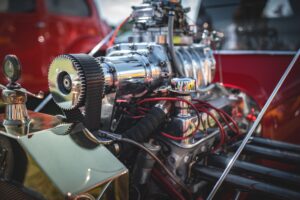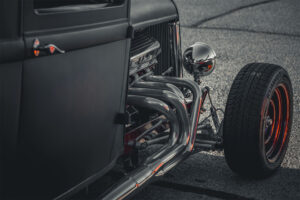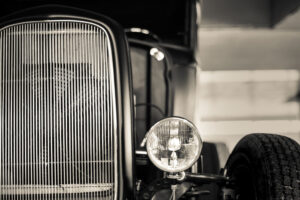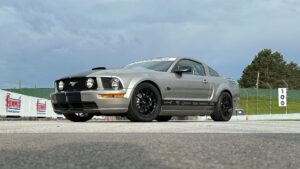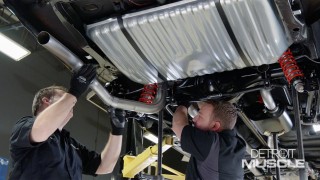Steering 101: Main Parts And Functions
Welcome to Steering 101! While the actual steering wheel function is obvious, there are several other parts that come into play to make it all work so we’re going to run through the basics. For the veteran gearheads, this is old news. But for newbies, this is a good crash course!
The steering column connects the wheel through the firewall and into the engine compartment. Once you get into the engine compartment, that’s where things get more intricate. Steering shafts and U-joints come into play to help wind around everything in the engine compartment. Stock steering shafts have pretty neat built-in safety features. There’s a part that will collapse if you are in a collision which allows your steering to fall away so it doesn’t pin the driver in the chest.
When designing custom steering there are several different aftermarket shafts to choose from. One of the favorites here in the shop is the Double D Steering Shaft. There are typically 2 different sizes: 1″ and 3/4″. As you might guess, the 3/4″ allows for the steering to be put in tighter areas.
How are all these parts connected? By U-joints. They’re the same U-joints you find in a driveshaft and allow you to direct the rotational movement around anything that might be in the way – like headers or engine mounts. There are a lot of different U-joint types out there ranging from stock applications to aftermarket.
Finally, the parts that are needed to turn left or right. It can either be a rack and pinion or a steering gearbox. Rack and pinion steering is found underneath vehicles with IFS and is a pretty unique feature. As the suspension travels up and down or side to side, the steering follows that movement. For vehicles with solid front axles, there’s a gearbox in place. All you have to do is connect steering linkages down to the wheels and tires.
Want to read more articles like this?
Join the PowerNation Email NewsletterRead More from PowerNation
Video Player is loading.
Current Time 0:00
/
Duration 0:00
Loaded: 0%
0:00
Stream Type LIVE
Remaining Time -0:00
1x
- Chapters
- descriptions off, selected
- captions off, selected
This is a modal window.
